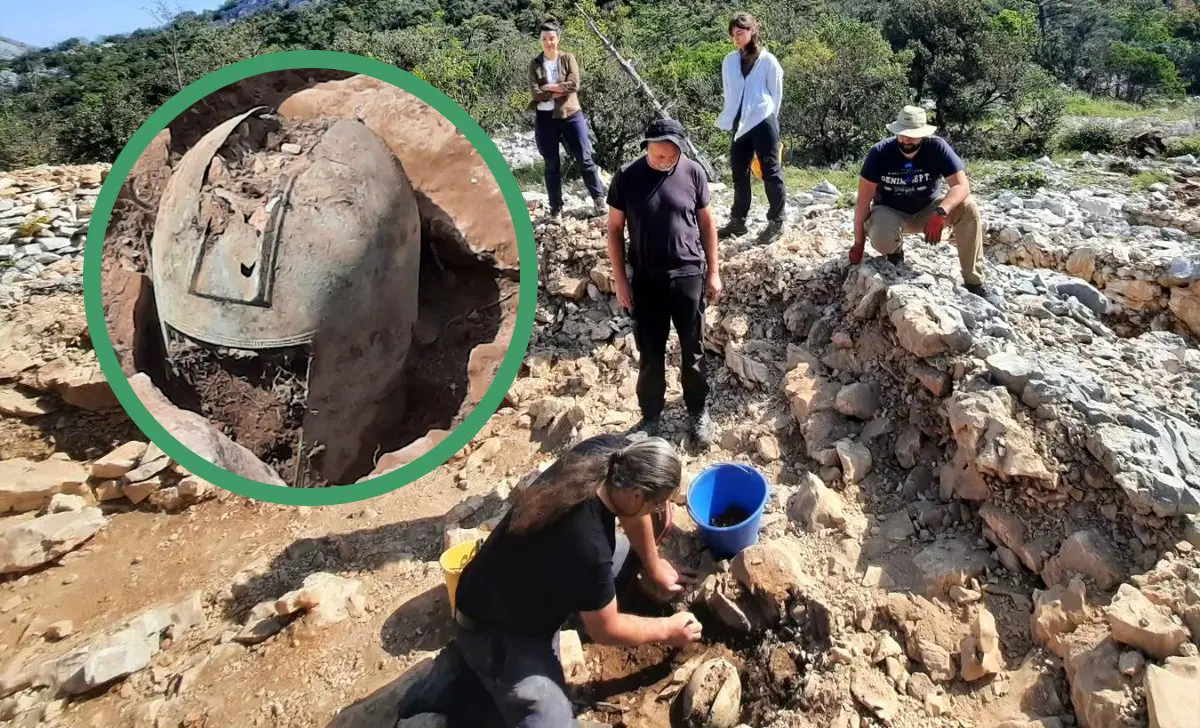Archaeologists from the Dubrovnik Museum have uncovered a well-preserved Greco-Illyrian helmet during excavations near the village of Zakotorac on the Pelješac peninsula, Croatia.
Greco-Illyrian type helmets originated in Peloponnese, Ancient Greece, where it likely evolved from the Kegelhelm (or Kegel type) of the Archaic Period.
The helmet saw four phases of development between 700 to 500 BC and was used by the Ancient Greeks, Etruscans, Scythians, and Illyrians.
Excavations are being conducted at the Gomile archaeological site in the Donja Banda area by the Dubrovnik Museums, working in collaboration with the City Museum in Korčula and the Dolenjski Museum.
Previous studies of the area have found several burial mounds containing skeletal remains from the 4th century BC, in addition to associated grave goods consisting of bronze clothing pins, bracelets, rings, and a Greco-Illyrian helmet.
In the latest study, archaeologists have discovered a second Greco-Illyrian made from bronze which was found in one of the dry wall additions to a burial.
According to the researchers, the helmet is in an extremely well preserved state and was likely deposited as a votive offering.
Speaking on the discovery, a representative from the Dubrovnik Museum told HeritageDaily: “Along with numerous finds of jewellery, costumes and grave goods, this find of a helmet contributes in many ways to the knowledge of funeral rituals of Illyrian communities in the second half of the last millennium BC, and it ranks the area of Pelješac as one of the most important archaeological zones of the eastern Adriatic coast.”
Header Image Credit : Dolenjski Museum
Sources : Dolenjski Museum







